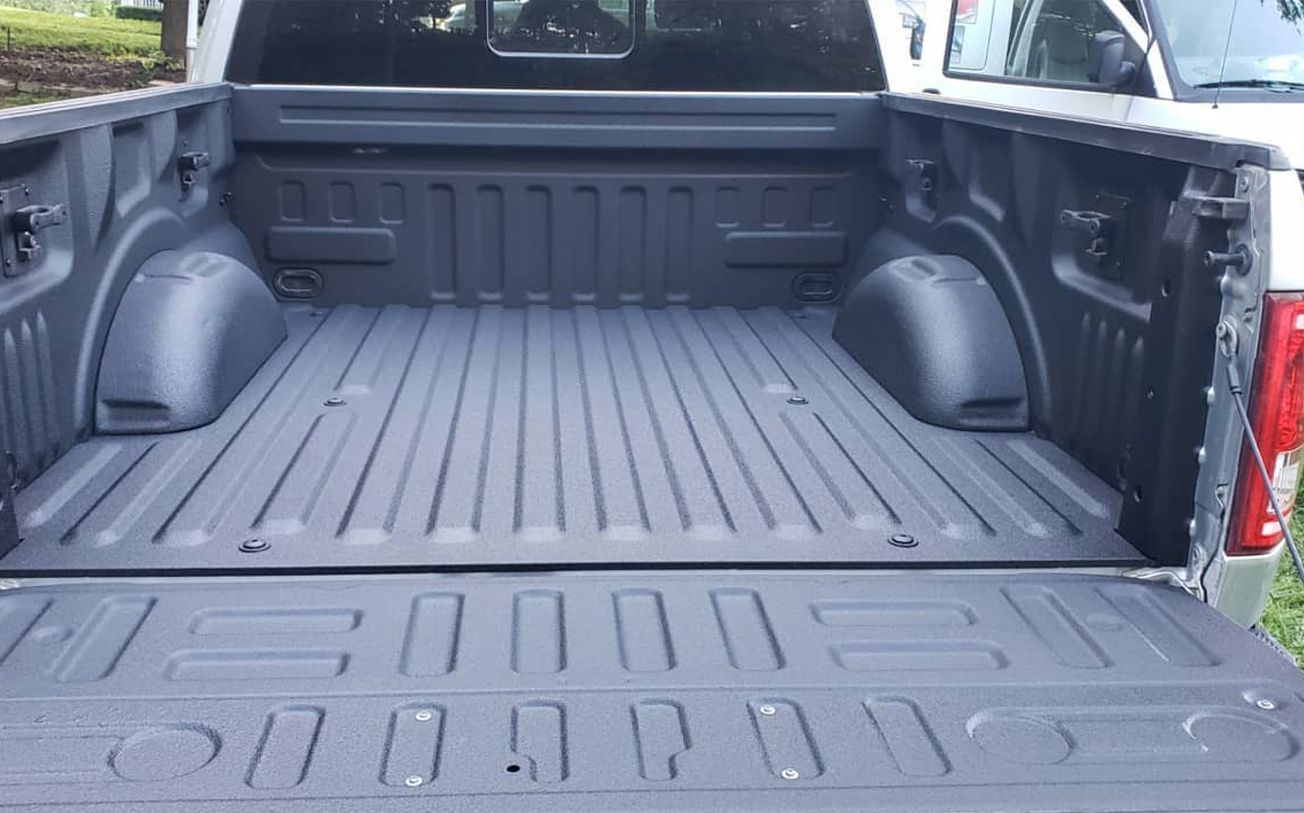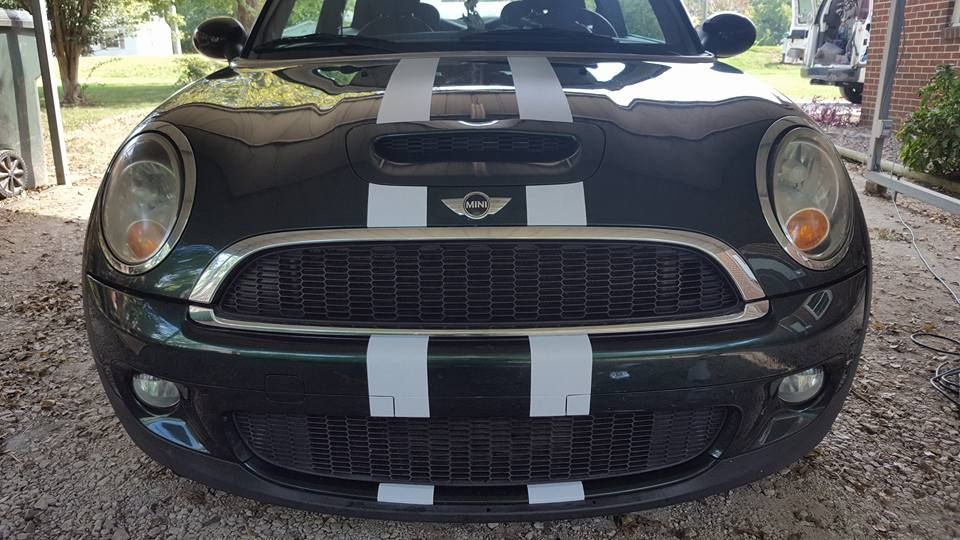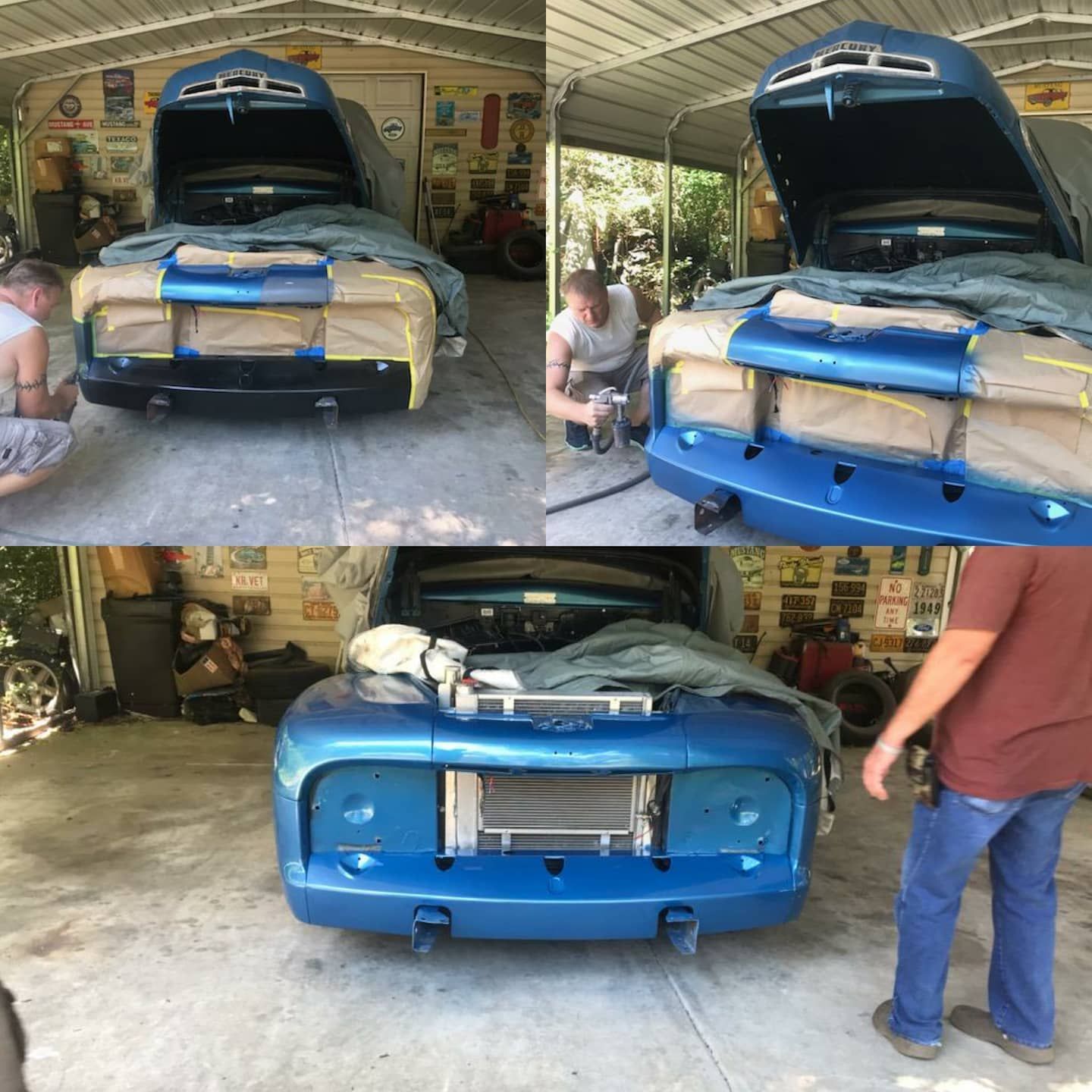Choosing Between Spray-On and Drop-In Bed Liners: Pros & Cons

You just bought a new pickup or are refurbishing an older one in South Carolina. You want to protect the truck bed from scratches, corrosion, and daily wear. You’ve heard of spray-on liners and drop-in liners — but which one is right for your needs?
This post will explore how spray-on and drop-in bed liners differ, the pros and cons of each, key decision factors (especially for someone who uses their truck regularly), and help you choose the right liner for your truck.
Understanding the Two Types of Bed Liners
What is a spray-on bed liner
A spray-on bed liner is a protective coating (often polyurea, polyurethane, or hybrid) sprayed directly onto the metal surface of the bed. It bonds to the contours, ribs, and welds of the bed, forming a seamless, textured, protective layer.
What is a drop-in bed liner
A drop-in liner is a molded shell (plastic, composite, or rubber) that is placed into the truck bed. It rests on the bed surface (sometimes bolted down) and can be removed, replaced, or shifted if needed.'
Pros & Cons of Each Option
Below are the advantages and disadvantages of spray-on vs drop-in liners. Each list includes a short intro so readers know what they’re about to see.
Spray-on bed liner — advantages
When properly installed, spray-on liners offer:
- Seamless protection — Because it bonds to the bed surface, there’s no gap for water or debris to sneak underneath.
- Durability & abrasion resistance
— It resists scratching, denting, and chemical exposure better than many plastic liners.
- No shifting or rattling
— Since it’s bonded, there's no movement or noise under load or at highway speeds.
- Better long-term protection — It can help prevent corrosion by sealing bare metal from moisture.
- Custom fit & thickness control — Installers can apply more material in vulnerable spots (corners, edges) for extra durability.
Spray-on bed liner — disadvantages
Spray-on liners aren’t perfect. Some drawbacks include:
- Higher cost
— Professional applications cost more because of labor, surface prep, and materials.
- Preparation sensitivity
— If the metal isn’t prepared properly (cleaned, roughed up, masked), adhesion issues or peeling can occur.
- Difficult removal
— If you ever want to change or remove the liner, it’s very labor intensive and may damage the underlying surface.
- Potential for fading — Some formulations may fade over time, especially in harsh UV exposure.
- Cure time — You may need to wait hours (or more) for the coating to fully cure before loading the bed.
Drop-in bed liner — advantages
Drop-in liners offer benefits many truck owners like:
- Lower upfront cost
— Easier on the budget compared to spray jobs.
- Easy installation / removal
— You can install or remove it yourself, and in many cases shift it between trucks.
- Damage containment
— If the liner cracks or is damaged, you can replace it without disturbing the bed itself.
- Hides existing dings — Drop-ins can mask dents or wear in the bed that you may not want visible.
- Smooth surface options
— Some drop-ins have smoother finishes, making sliding cargo easier.
Drop-in bed liner — disadvantages
However, drop-in liners come with trade-offs:
- Water & debris accumulation
— Because there's a gap under the liner, moisture, dirt, or debris can collect there, potentially leading to rust.
- Movement, rattling, or warping — At highway speeds or with heavy cargo, drop-ins may shift, rattle, or warp.
- Uneven protection — Drop-ins don’t contour to every nook and cranny, leaving some areas exposed.
- Damage to paint underneath — The liner rubbing against the bed over time can wear paint through to bare metal.
- Limited lifespan — Often need replacement sooner than spray-on liners.
- Less adhesion to bed — Because it doesn’t bond, protection is less robust in tough conditions.
How to Decide: Key Factors to Weigh
Here’s how to think through your particular situation. Use these considerations to decide which option fits your use case best.
1. Usage intensity & cargo types
- If you haul heavy, sharp materials (construction debris, metal, rock), spray-on’s durability may pay off.
- For lighter, moderate loads (furniture, occasional yard materials), a drop-in liner might suffice.
2. Weather, moisture, and corrosion risk
- In humid, coastal, or wet environments (as parts of South Carolina are), sealing metal from moisture is critical — spray-on has advantage.
- If your vehicle sees less exposure to damp conditions, drop-in may be acceptable if kept well maintained.
3. Budget and repair flexibility
- If you plan to keep the truck long-term and want something “set and forget,” a spray-on liner can be better investment.
- If you like flexibility, may resell, or swap trucks, drop-in gives you more freedom to change.
4. Installation and removal tolerance
- If you want something permanent and maintenance-free, spray-on is ideal.
- If you want ability to remove or replace the liner later, drop-in is more forgiving.
5. Quality of installer / application risk
- Spray-on results depend heavily on prep, technique, and materials. A bad job can lead to peeling or failure.
- Drop-in is more foolproof to install (less sensitive), though material quality and fit still matter.
6. Longevity & resale value
- A well-done spray-on liner can last many years and may increase appeal to buyers.
- A drop-in liner that’s cracked or worn may detract or need replacing before sale.
FAQs (common questions drivers ask)
- Can I combine both liners?
Yes. Some owners use spray-on as base protection and add a drop-in or rubber mat over it for added cushioning or to protect heavy loads.
- How long does a spray-on liner last?
If well applied, it can last many years (10+ in some cases), depending on exposure and wear.
- Will a drop-in liner cause rust underneath?
It can — moisture, salt, and debris may accumulate between liner and bed, leading to corrosion over time if not cleaned regularly.
- Does a spray-on liner prevent dents?
It provides some protection, but very heavy or sharp impacts can still dent metal. The liner helps distribute force and reduce direct damage.
- Can a spray-on liner be repaired if damaged?
Yes — small areas can be re-coated or patched by a professional, though it must be blended properly.
Conclusion
There’s no one-size-fits-all answer when choosing between spray-on and drop-in bed liners. The best choice depends on how you use your truck, the environment you drive in, your budget, and how long you plan to keep the vehicle.
If you haul heavy loads regularly, drive in humid or corrosive environments, and want long-term protection, spray-on is often the superior option. If you prefer flexibility, lower cost, and easier removal or replacement, a drop-in liner may suit your needs.
If you’re in South Carolina and want professional help deciding or installing a bed liner,
contact us — we can inspect your truck, recommend the best liner for your use, and install it properly.


